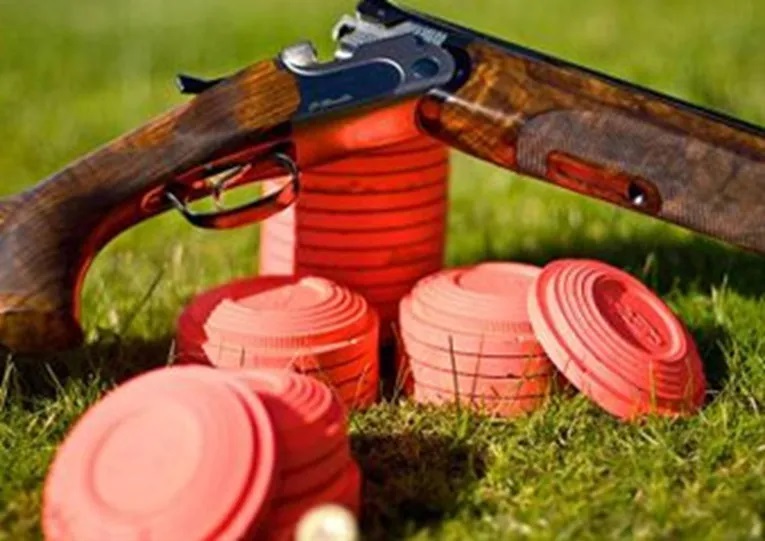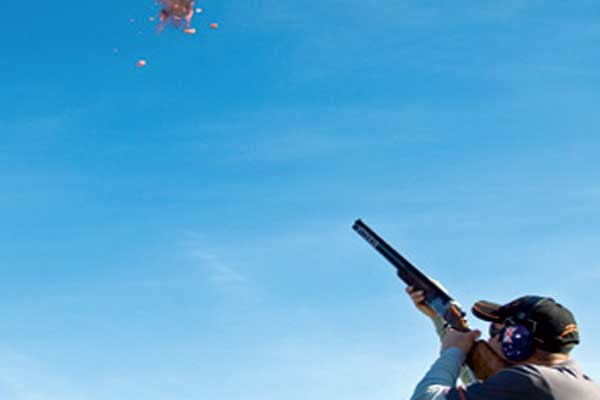
Shooting sporting clays seems effortless to the spectator as everyone appears to be having fun. Nevertheless, you must practice properly how to shoot sporting clays if you want to earn respect among fellow competitors.
Once on the shooting platform, you get to realize there is more to hitting a target than pulling a trigger. The clays seem to move at an unmanageable speed and tracking them with a shotgun requires wit, skill and confidence.
Contents
- 1 Skills to Master in Shooting Sporting Clays
- 2 Clay Shooting While Observing the Lead
- 3 How to Estimate the Lead
- 4 How To See the Lead When Shooting Clay Targets
- 5 Best Way to Maintain Concentration and Quick Reflexes
- 6 Factors that Affect the Speed of Clay Targets?
- 7 Preparing For a Sporting Clays Competition
Skills to Master in Shooting Sporting Clays
Shooting and hitting your clay target requires utmost concentration, the right posture, coordinated movements, and fundamental knowledge of ballistic principles. However, this mastery comes with lots of practice and exposure to real sporting clays events.
Over time, you get to break clay pigeons with ease, and you can even teach amateurs how to shoot sporting clays within the right range.
Clay Shooting While Observing the Lead
For a successful shooting clay experience, you need to learn how to spot the lead. This means learning the technique of shooting in front of the target, for purposes of compensating for factors such as velocity, range, and gravity.
It is important to note that the speed at which clays are launched varies from one event to another. For example, at the Olympics, the clay speed is around 120 km/hr, while for Compak shooting the speed is 60/90 km/h.
As for the shotgun shells, the starting velocity when shooting sporting clays ranges from 390 to 430 m/s. Certainly, both the clays and the shells lose velocity along the way owing to air resistance and gravity, and the result is a delay between the time you pull the trigger and the time the shot reaches the target.
How to Estimate the Lead
You must know how to estimate the lead if you are to be successful in the clay shooting sport. Although a good number of sporting clay games enthusiasts rely on their experience and instinct for such estimation, one can do a mathematical calculation to determine the lead. Generally, all these factors work well together.
There are specific factors to be taken into account in learning how to shoot sporting clays. One of them is range, and the others are speed and angle of the target. Shooters consider these factors and then aim instinctively at points in front of their respective targets’ flight paths. The idea is to determine where the targets are likely to reach.
How To See the Lead When Shooting Clay Targets
Firing by tracking the target’s trajectory
This involves pointing the shotgun where the clay will leave the trap and tracking its trajectory until the shooter has gone past the clay. Start your gun in a low gun position, with your eyes on the target. When the target is released, start the gun and mount the gun to your shoulder while maintain lead. They then stop moving the gun and take the shot.

Stopping the shotgun to take the shot or firing with the shotgun in motion
This involves tracking the clay’s trajectory while continuing to move the gun in a fluid motion, overtaking the clay, and taking the shot without jerking the gun.
It is advisable to practice both techniques and determine which of them works best for you. Ultimately, what every shooter is interested in is knowing how to shoot sporting clays and not just imagine it through mathematical calculations.
Best Way to Maintain Concentration and Quick Reflexes
Concentration and quick reflexes are vital in sporting clays, and to manage these there is a ritual you need to undertake. Adjust your earplugs or cap and feed your shotgun with the necessary shells before closing it. Only then can you move a tiny step forward to occupy your shooting stations. Remember that concentration is vital not only on the shooting platform, but off it.
Factors that Affect the Speed of Clay Targets?
Clay targets are launched at different initial speeds, ranging from about 60 to 120 km/h, depending on the type of clay being used.
The speed of the target is also affected by gravity, air resistance, and the shooting distance.
Preparing For a Sporting Clays Competition
One of the reasons people want to know how to shoot sporting clays is to prepare for competitions. Sporting clays is an excellent way to practice for bird hunting, turkey hunting, or predator hunting seasons. But for starters, you need to know the best shotgun to use. The best shotgun for shooting sporting clays is one that is proportional to your size and one that you feel comfortable using.
Unlike trap and skeet, most sporting clay shooters prefer over-under shotguns, but still some people use side-by-side and semi-automatic shotguns. Besides acquiring the requisite skills and selecting the best shotgun, you also need to practice regularly and to develop a consistent routine. It is also crucial that you prepare yourself both mentally and physically.
Then there is the issue of competition rules and regulations. You need to familiarize yourself with these, even as you study the course layout and know the types of clays to be used. Sporting clays courses offer a variety of target presentations, such as crossing targets, quartering targets, and incoming targets. It’s essential to understand the target presentations and adjust your gun mount and shot size accordingly. Ensure that safety rules are being followed. Eye protection and ear protection should be worn at all times on clays course and gun clubs.
The ammunition must also be right for your shotgun and your use. Knowing how to shoot sporting clays is one thing but it is another to have the most suitable ammunition for use. Whether or not your ammunition is right is dependent on a variety of factors, including the range, wind conditions, and the type of clay being used.
It is also a good idea to experiment with different types of ammunition to establish what works best and what you feel most comfortable using.
Finally, avoid some common mistakes people make when shooting sporting clays. One of them is shooting too quickly. You can easily miss your target if you make this mistake. Other common errors people make include taking their eyes off the target, flinching, and failing to maintain a consistent stance and grip.
However, even with all the great ammunition, sports preparations and shooting practice, what will determine if you perform exemplary well or not is your capacity to relax and enjoy the experience. After all, a relaxed mind can easily focus. At the same time, do not ignore the professionals. There is always something of importance a Pro-shooter can teach you. Some of the tips professional sporting clay shooters offer is not found in books. It comes from many years of practical experience.
